Creating social media content from scratch can sound like an incredibly daunting task, but it’s the one thing that really moves the needle when it comes to social media marketing.
Great social media content creates a bridge between a brand and its audience, enabling both to get value from the interaction.
The best content is based on a strong social media strategy, one that aligns with your business goals and makes sense for your brand, niche and industry. It’s worth knowing how to create content for social media that has a lasting impact.
So that’s what we’re going to cover in this guide: the what, the why and the how-to of social media content creation, complete with 5 essential steps and 5 key strategies that will help you take this essential task to the next level.
How to create next-level social media content
What is social media content creation?
Why is it important to create content for social media?
How to create content for social media in 8 easy steps
5 essential tips for creating good content on social media
What is social media content creation?
Social media content creation describes the process of creating content that gets shared on social media platforms. This can include anything from written content such as Facebook text posts, to short videos for TikTok or infographics on LinkedIn.
With all the types of social media content available, it can be hard to know which one is best suited for your brand. The best and most straightforward way to find out is to experiment.
Try out different social media post types and see if you can tailor them to your brand voice and personality. Then go into a social media analytics tool like Socialinsider to find out how they perform, based on your brand’s key social media metrics.
Along the same lines, you can trust a social media competitive analysis to give you more insights on what kind of social media content performs best in your industry.
Content creation for brands can get much easier once you know what works.
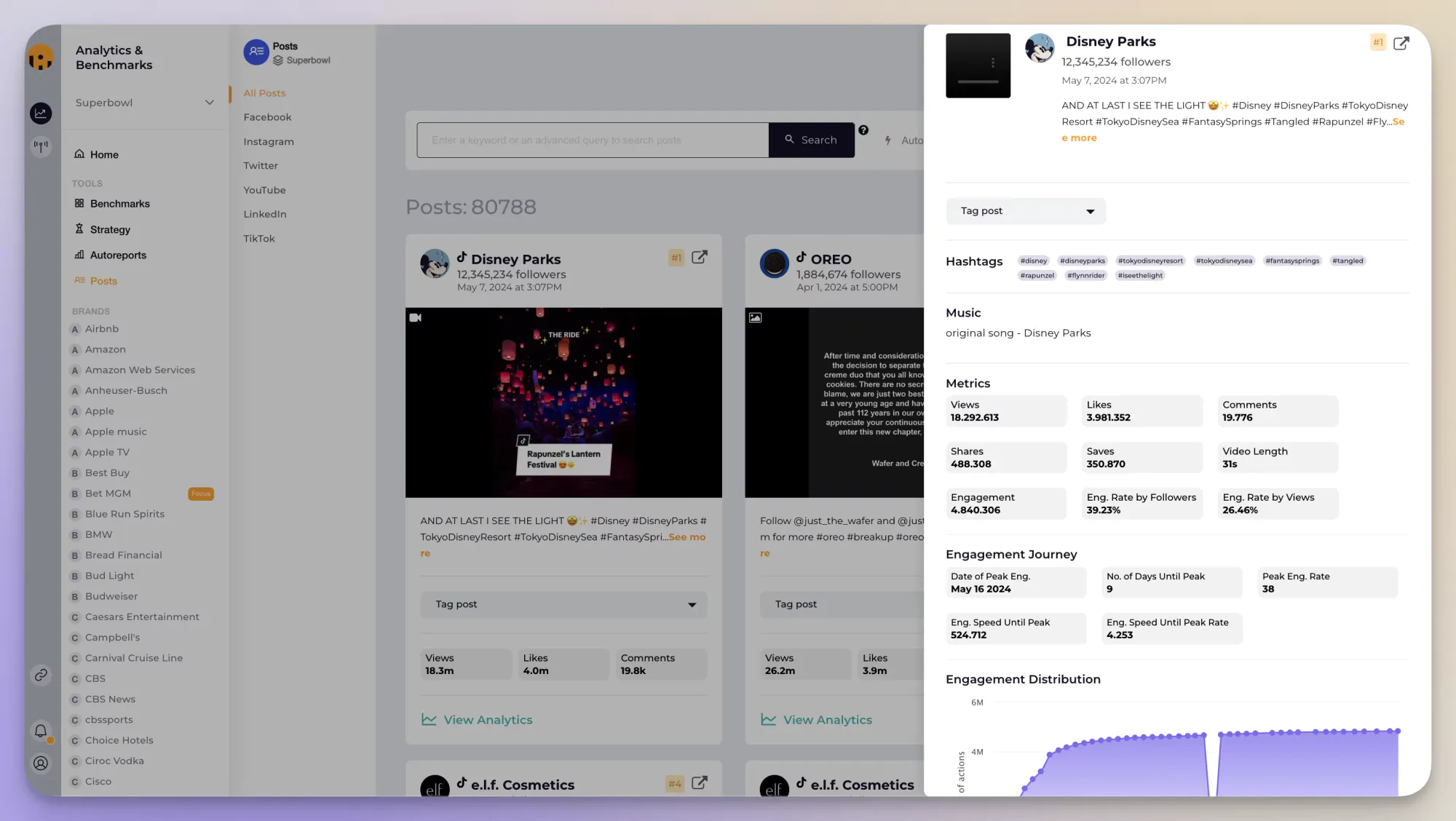
Get powerful social media post insights with Socialinsider!
Monitor your social media progress, compare campaign performance and download pitch-ready reports with a single click!
Why is it important to create content for social media?
Learning how to create social media content for business can appear to be really challenging, but at the end of the day, it’s one of the most cost effective solutions for generating traffic and awareness for your brand.
In other words, it offers a massive ROI.
Without content, you would have no real presence on social media. Or any kind of social media interactions.
What’s more, good social media content helps you showcase your brand’s personality and connect with your audience.
Each post can bring you closer to your community, but you have to walk a fine line between promoting your brand and offering real value.
How to create content for social media in 8 easy steps
The trick is not simply to learn how to generate content, but how to create consistent content on social media. Building a framework for social media content generation will enable you to never run out of fresh ideas, no matter what social trends come and go.
So what are the main digital content creation tasks for social media, step by step? Let’s find out:
Research your buyer persona pains and gains
When it comes to social media content creation, your work begins long before any posts land on your followers’ feeds.
To be able to produce quality content for social media, you need to do some serious research on target audience needs through surveys, customer interviews, and community listening.
Expand your research and get market insights and competitive data. This will help you uncover insights on what people want to see on social, why your audience engages with your brand, and the type of posts your target audience prefers to see.
You should strive to learn all you can about your audience: who they are, where they live, what they’re interested in and so on. Only then can you start to create social media content they can resonate with.
One of the key social media content best practices is social listening. This offers a great way to find out what people in your industry are posting about and what your target audience is most interested in.
With the proper research, learning how to create a content strategy for social media is a breeze.
Find social media content gaps
Doing research on your audience is not enough if you want to create truly original and unique content for your audience. To take your digital content creation efforts to the next level, you need to find content gaps that your brand is uniquely qualified to fill.
How do you do that? Through competitor analysis.
Start by comparing social media accounts (yours and your competitor’s) side by side, look at the data and understand why your competitors are doing better.
Spot key topics that they don’t cover enough, and create content that addresses that topic in depth and offers a lot of value.
It makes sense to keep adjusting your topics and content types, and adding some good digital content creation ideas based on what your competitors are developing.
After all, social media is a jungle and only the most engaging, valuable content can reach your target audience and bring you the results you wish for.
Set goals
Setting social media goals is essential if you aim for a complete content creation process.
They can either be general (e.g. increase brand awareness, boost website traffic, grow your social media following) or platform specific (such as getting more saves on your Instagram, more impressions on LinkedIn or more views on TikTok).
At the end of the day, goals are simply milestones you expect your content to reach, so that you know you are on the right track. Different goals result in multiple forms of content creation.
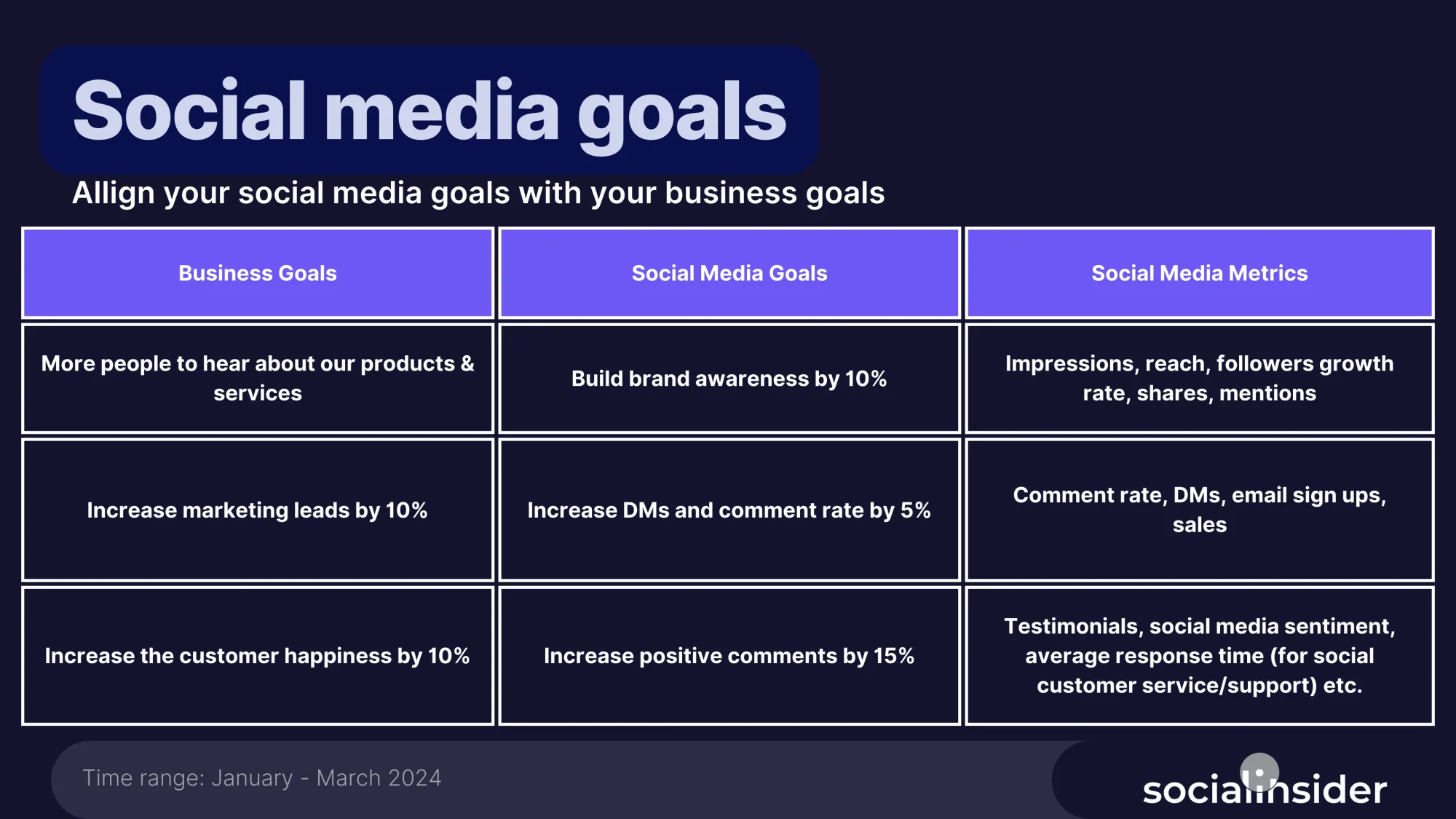
Brainstorm for creative ideas
Once you have some handy social media benchmarks in your pocket, the next step is to start brainstorming for new, creative ideas to post on social media. You can do this by yourself or you can get your team to participate.
A fresh perspective is always welcome when brainstorming.
Social media content inspiration can come from anywhere. You just have to be open and collect as many sources as you can.
Don’t limit yourself to the traditional sources, though. You won’t be able to produce excitement for your audience if you’re just recycling what everybody else is already saying.
Define your content pillars
Once you have a solid library of content ideas for social media, you can move on to defining your social media content pillars. These are the key themes or topics around which all your content is structured.
For instance, if you are a brand in the beauty industry, you may choose to create social media content around these content pillars: behind-the-scenes content (such as employee spotlights), educational (makeup tutorials) and conversational content (such as community stories or live Q&A sessions).
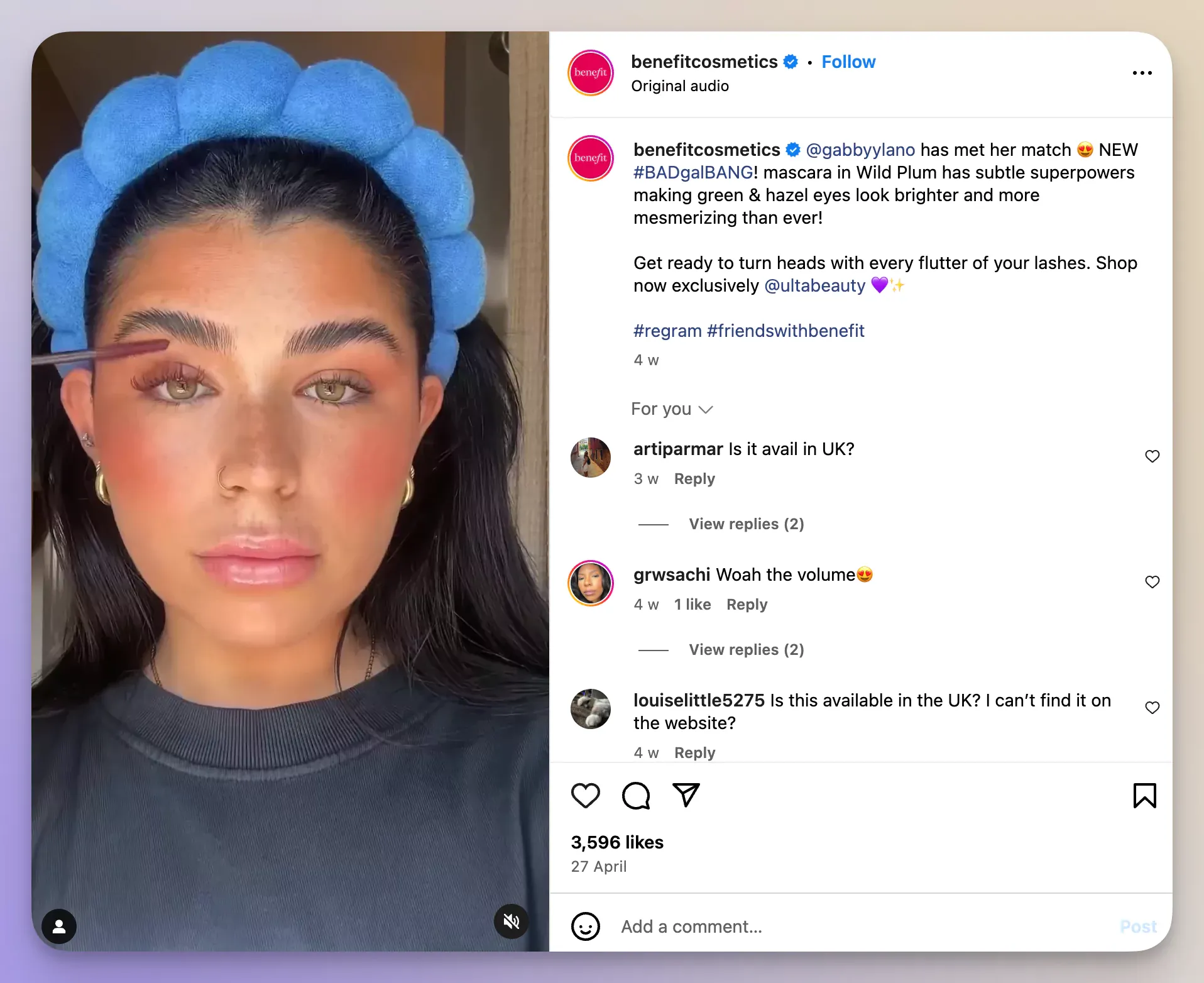
Create a content calendar
With a few definitive social media content pillars under your belt, you can start to create a content calendar for your social media platforms.
Ideally, you would have a unique calendar per platform, but if your social media strategy includes a lot of cross-posting and content recycling, then it makes sense to put everything in one place.
In any case, learning how to create a content calendar for social media is a very important part of your job as a social media specialist.
With a content calendar, you can plan posts ahead of time and have a bird’s eye view of your post distribution throughout the month.
To automate this process further, you can also use a social media management tool that will also help with scheduling content and even provide additional features such as analytics and reporting.
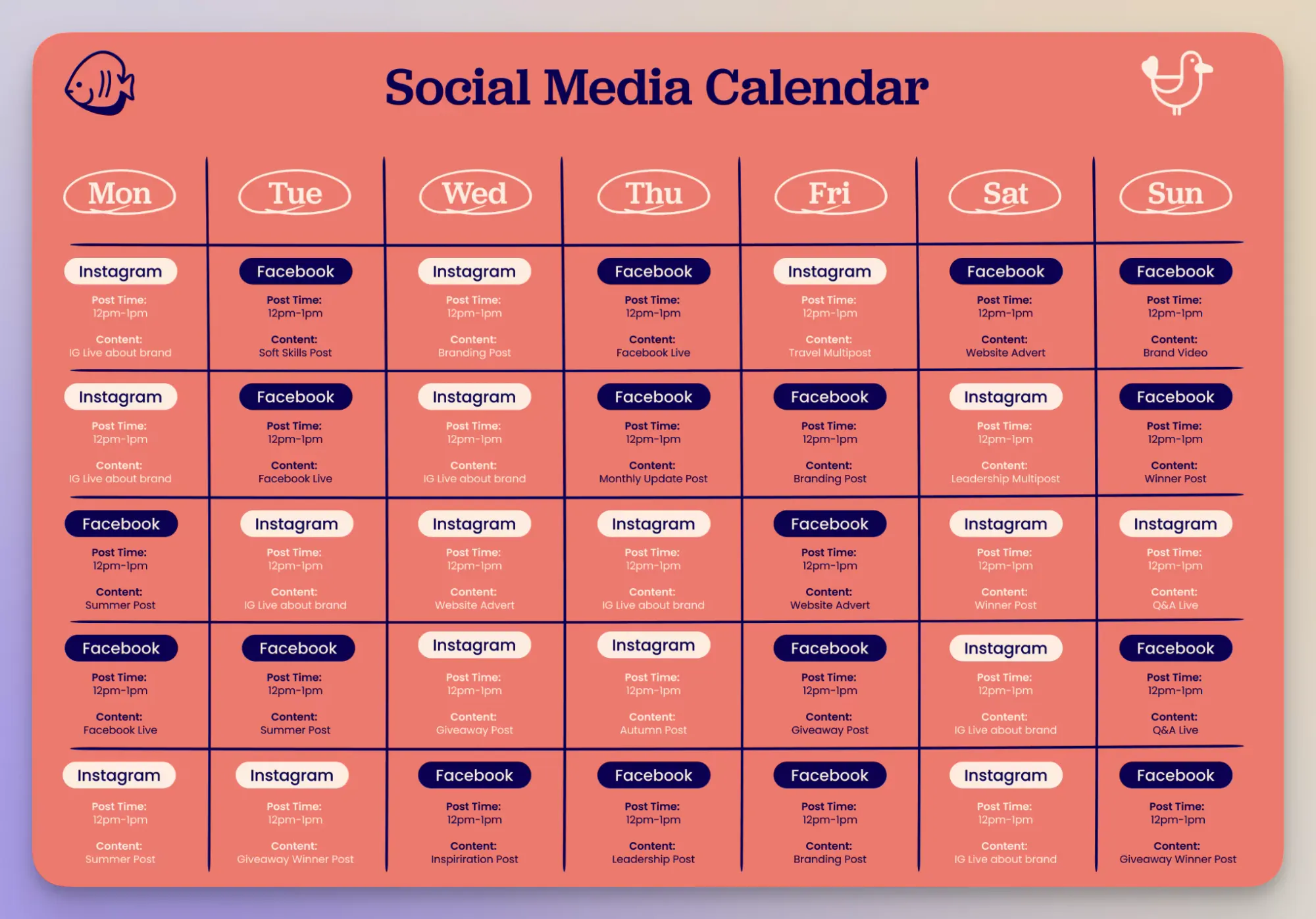
Prepare posts for publishing
Before publishing, you should make sure everything is in its place. Depending on the type of post you’re sharing, you may need to prepare visual materials such as images, infographics or videos.
To make things easier for you, you can create a social media post checklist and populate it with all the necessary elements of a successful post, such as:
- A catchy headline
- Relevant campaign hashtags
- Attractive visuals
- Strong CTAs
- Useful links
Then, as you’re making content for social media, you can simply check off every item as you add it to your post.
Constantly monitor your performance
Your best source of social media content inspiration is your own data. To be able to create business content for social media, you need to understand what works and what doesn’t.
To start making data-driven decisions regarding your content on social media, you can rely on a social media analytics tool like Socialinsider to do all the heavy lifting.
Once you add your social profiles in our app, the possibilities are endless. You can do advanced competitive analysis and benchmarking, compare campaign performance, get powerful individual or brand-level post insights and download pitch-ready reports to present to your team or clients.
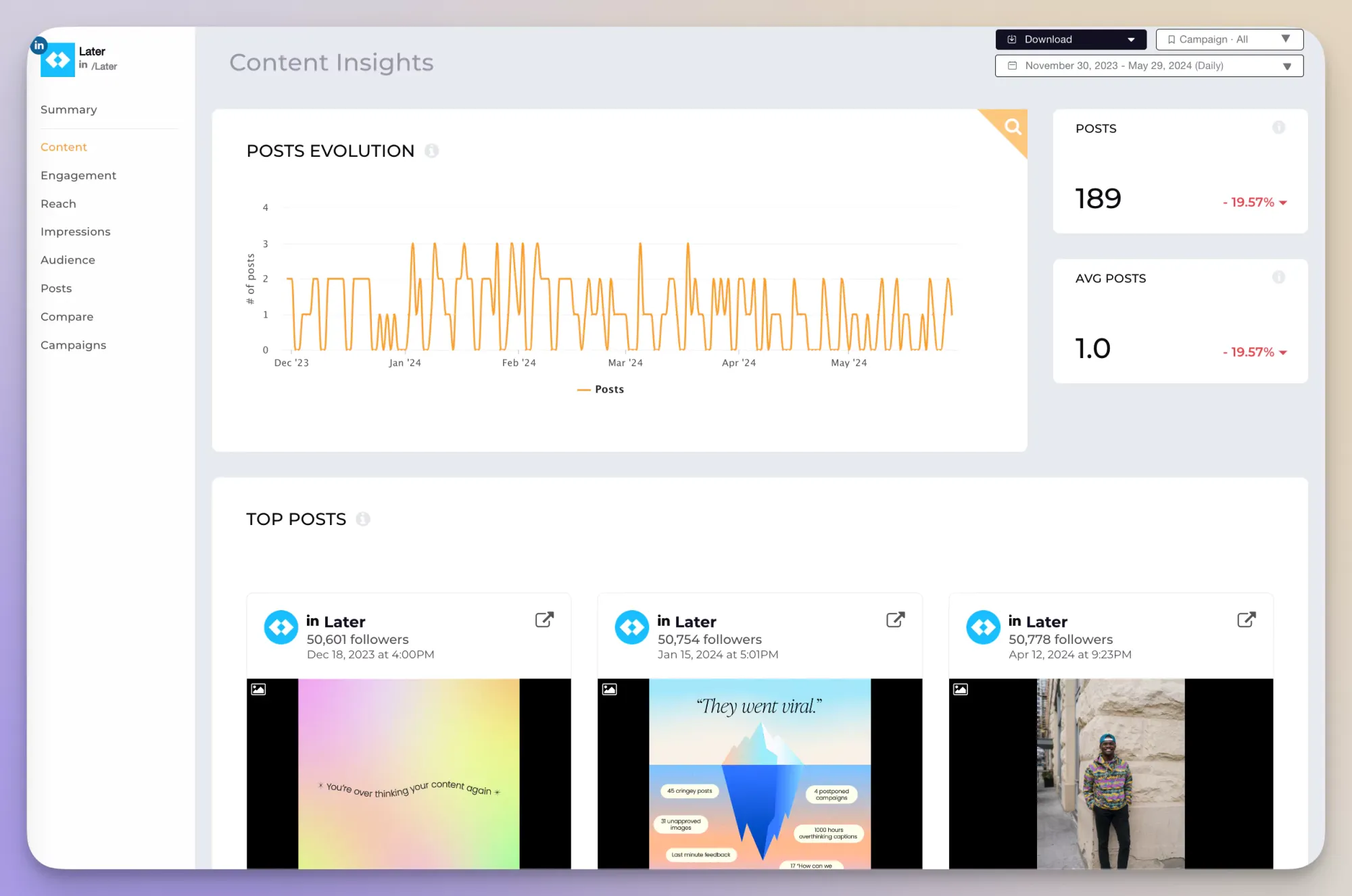
When it comes to figuring out what type of content performs best, you can rely on the Posts section to sort posts by key metrics (engagement, reach, impressions and other channel-specific KPIs) so that you can see what content resonated the most with your audience and where you can improve.
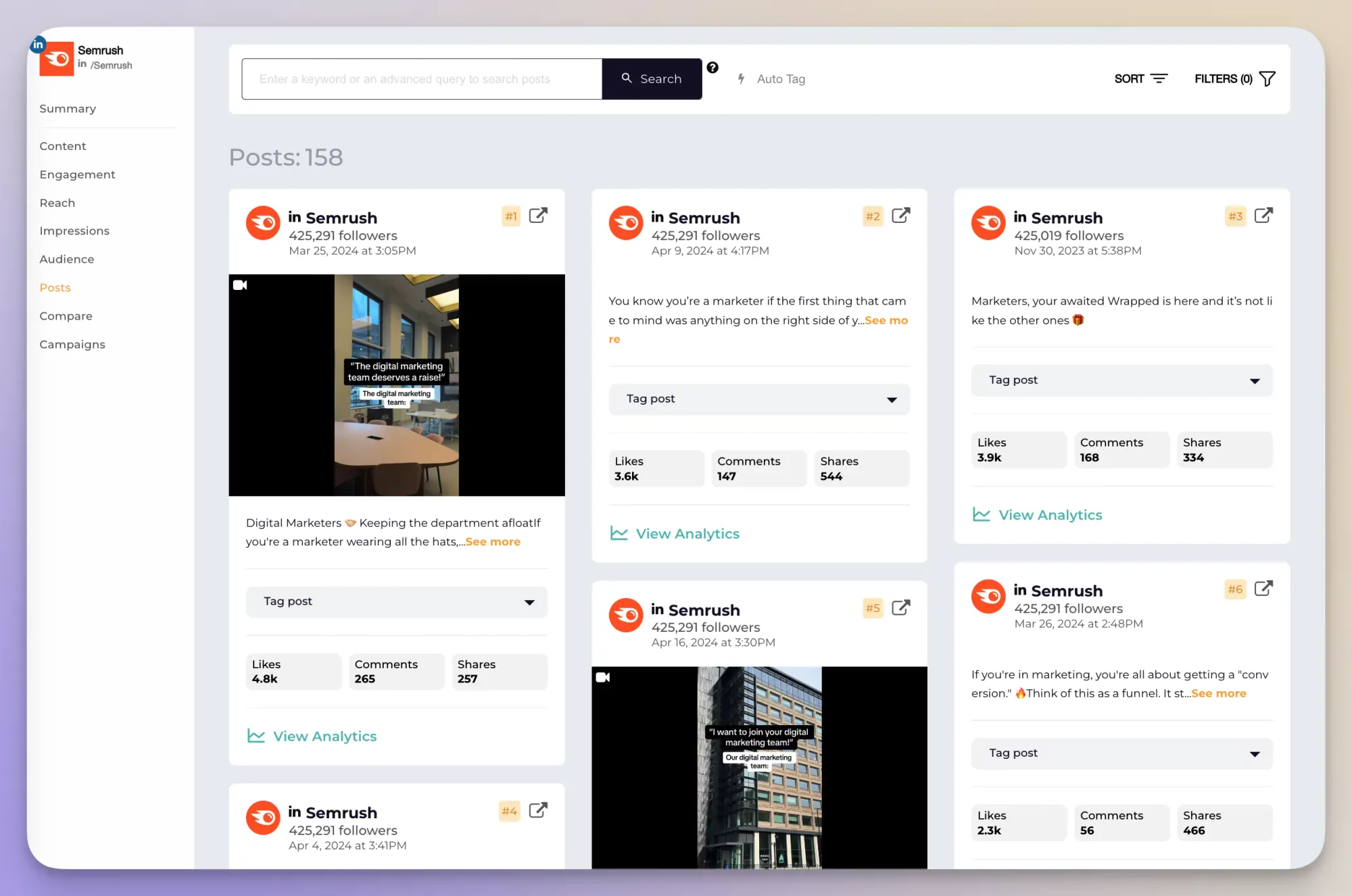
5 essential tips for creating good content on social media
We live in a world ruled by content. Quality content. People expect to read exciting topics every day, see creative posts, and feel like they are part of a community.
Unfortunately, the main disadvantage of the social media ecosystem is that thousands of posts are added per second.
And there’s another thing any content creator for social media should take into consideration: users tend to easily forget the information they read or see on these channels.
Creating high-performing social media content can be challenging and time-consuming.
But here we have 5 key tips that can drastically improve your efforts and help speed up and simplify social media content development:
Get content and strategy ideas from your target platform
As a social media manager, you need all the help you can get to learn how to create content for social media. Not just any kind of content, but quality content that makes a splash and brings in more awareness and potential customers for your brand.
An underrated trick that will drastically improve your content creation for social media is to look at all social media channels as more than the place where you publish content. Instead, you need to see them as your primary source of first-hand, tried-and-tested content and strategy ideas.
So, for example, if you need ideas for your Instagram content, go on Instagram and look for content & strategy videos. If you’re unsure how to take your TikTok content to the next level, go on TikTok and listen to what first-hand users of TikTok are saying.
To make sure the right kind of content lands in your feed or explore page, you can look for and follow other social media managers, as well as agency owners, solopreneurs or brands whose social media content you admire.
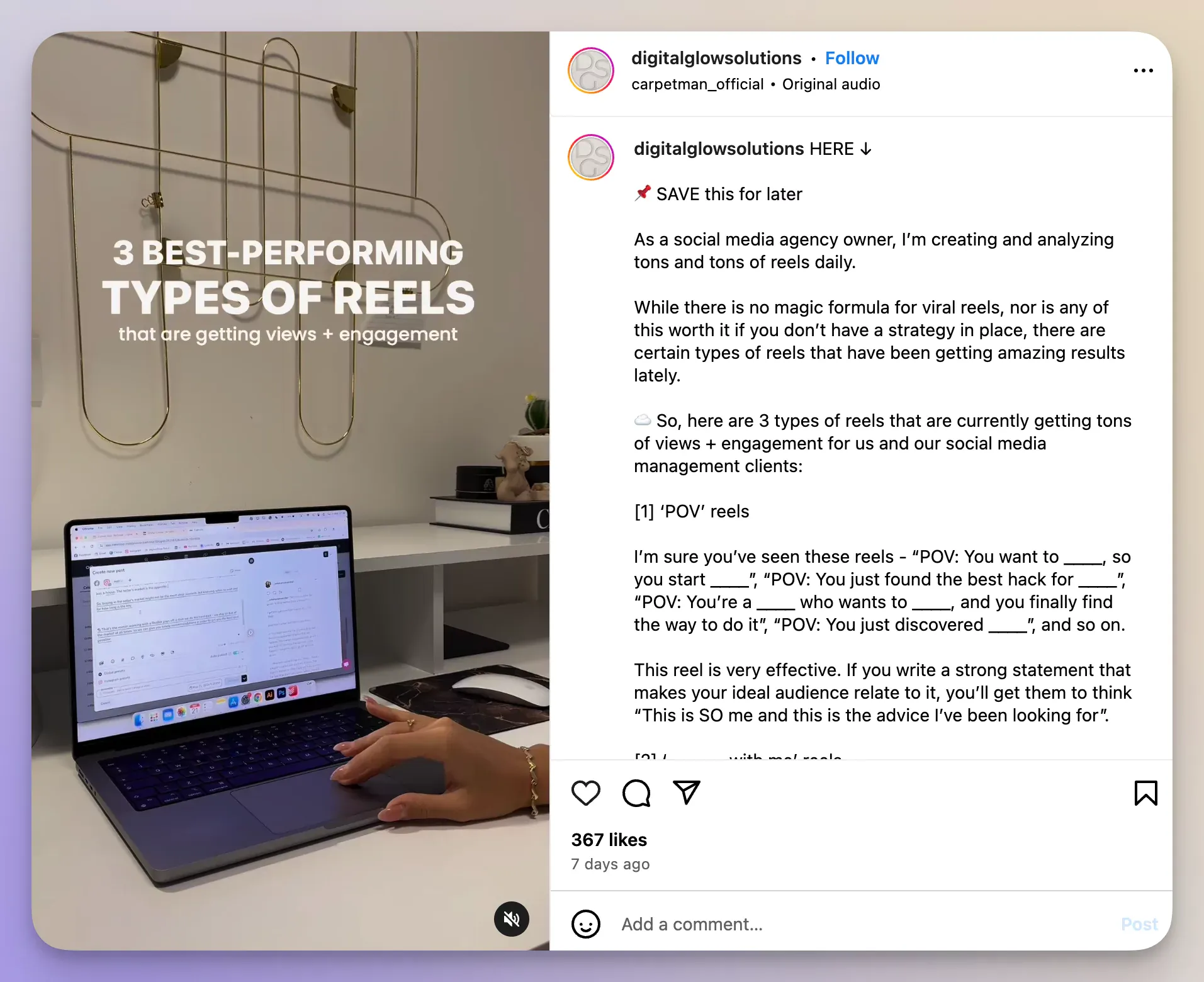
Create a content vault to store your best ideas
The trick is to optimize content creation for social media to the point where you never have to start from scratch. To do this, a great idea would be to build a content vault, where you organize all the content ideas you collect by content pillar.
You can do this using a productivity app like Notion, but it also works in Google Spreadsheets or other similar tools.
Vanessa Lau, content creator and business mentor, provides a ton of great ideas on how to create consistent content on social media, including content matrixes and content vaults.
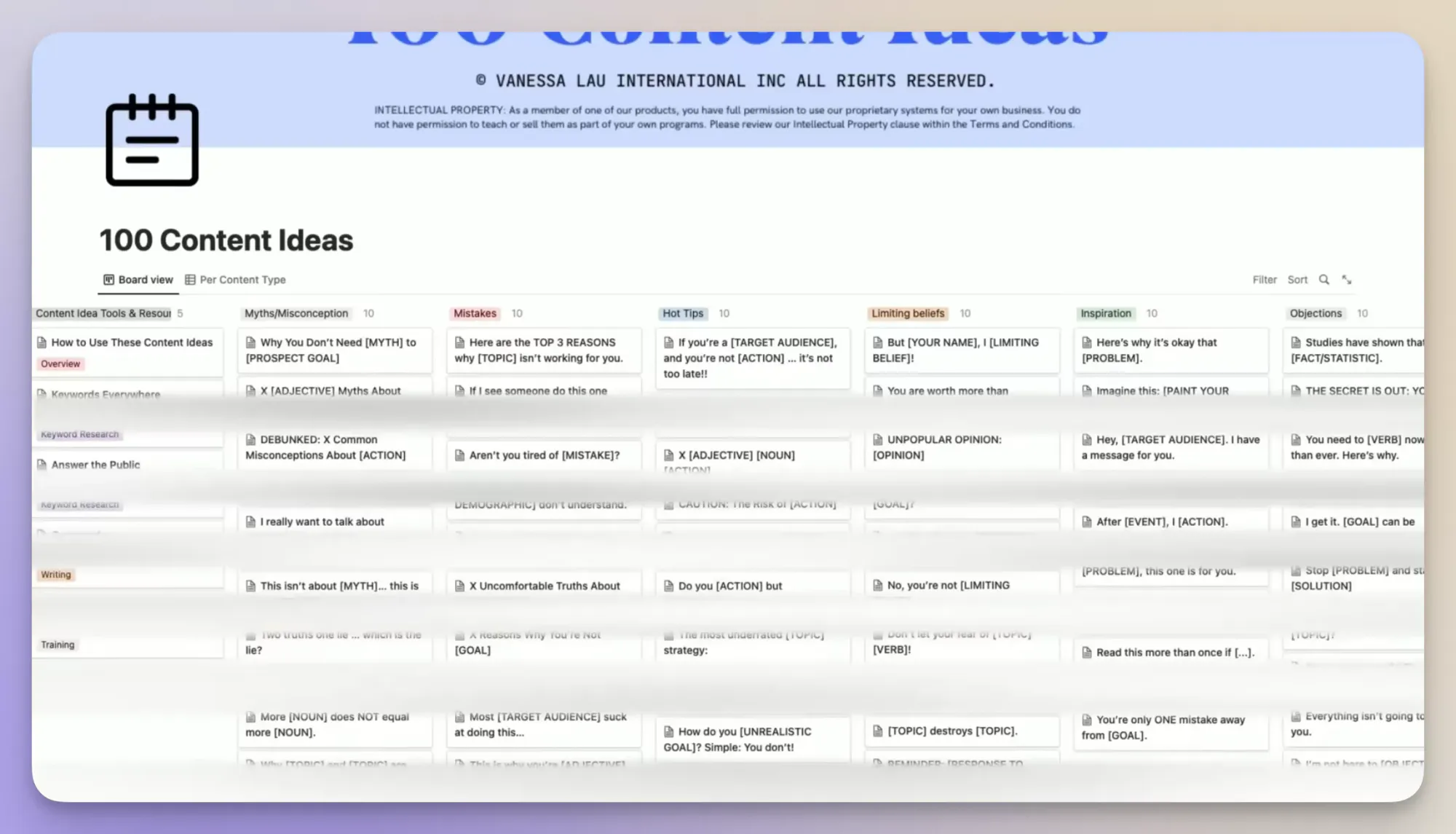
Embrace the power of video
There’s no doubt that we’re moving into the era of video. TikToks, YouTube Shorts and Instagram Reels are getting massive amounts of engagement and for good reason.
What’s more, stories are told more efficiently and authentically with video. Why? Users prefer to watch a video rather than read an article and get lost throughout the text when seeking information.
It’s just a quicker and easier way to learn everything about anything.
With that in mind, choosing to develop a strong video marketing strategy should be a no-brainer. For that to happen, you first need to learn how to create video content for social media and have a solid library of video content ideas ready to go.
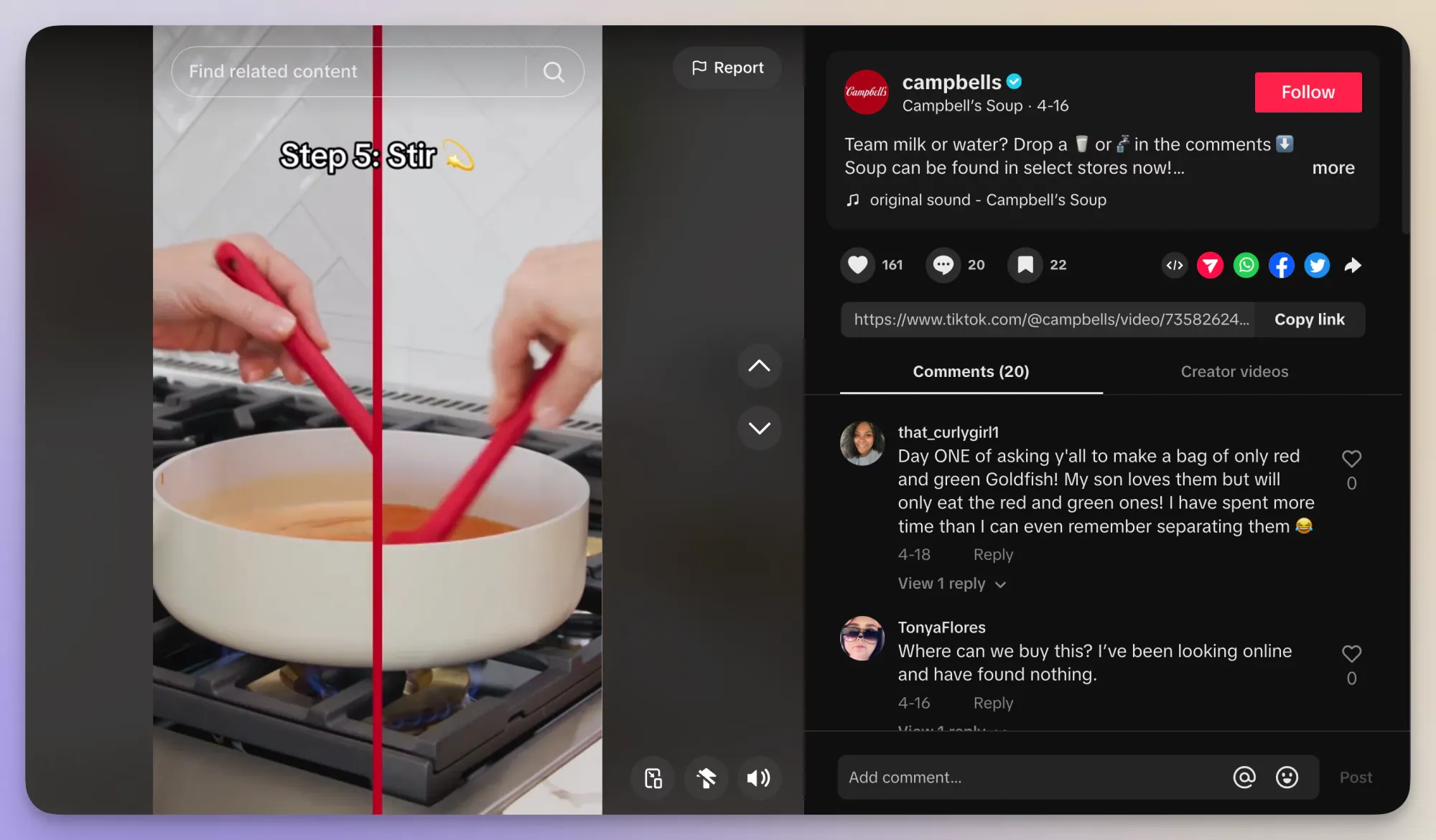
Keep an eye on the latest trends
In your journey on how to create engaging content for social media, you soon learn that following the latest social media trends is an important practice.
You don’t necessarily have to join all of them, but it’s important to know what’s trending and how you can adjust some of the trends to fit into your brand’s social media strategy.
TikTok is one of those platforms where new trends emerge every single day, so if you want to take full advantage of them, you need to act fast. If done right, TikTok trends can definitely be your ticket to virality.
Instagram is another place where trends come and go pretty fast. Maybe more so than on TikTok, for Reels you need to pay special attention to Instagram trending audios and use them to perfectly complement your video posts.
Attend conferences and stay on top of industry news
A good way to generate content for social media that offers real value is to never stop learning.
Go beyond the scope of your role and attend conferences, webinars or take courses that improve your understanding of the social media world and your particular industry’s landscape.
Social media is a very dynamic field so always staying on top of the latest news is crucial.
Collecting and sharing insights for social media will make you a better marketer and will make it easier for you to create content for your social media funnel. What’s more, it will improve your reputation within the industry and you will start to be seen as a subject matter expert.
Final thoughts
To sum up, here’s how you create social media content:
- Research your buyer persona pains and gains
- Find social media content gaps
- Set goals
- Brainstorm for creative ideas
- Define your content pillars
- Create a content calendar
- Prepare posts for publishing
- Constantly monitor performance
Learning how to create content for social media marketing is one of the most basic tasks you receive as a social media marketer. It’s not always the simplest task to complete over and over, but thankfully there are many resources you can access to make your job easier and deliver better results.
FAQs on how to create content for social media
What makes good social media content?
The definition of good social media content can differ based on your goals, but generally good social content is the type of content that makes people stop scrolling to engage with. That means your post offers value, makes them feel something or inspires them to take an action (click on a link, go on your website, book a demo etc).
How to write social media content?
Writing social media content is a matter of figuring out what is the main message of your post, and saying it in a way that will make people read until the end. Your writing for social media should be clear and concise, and it can also be funny or sarcastic if that fits in with your brand’s tone of voice.
What are the best apps to create social media content?
Creating content for social media can be simplified if you know when to rely on a few useful third-party apps. When it comes to anything visual, Canva is the undisputed winner of content creation tools for social media managers. For video editing, CapCut or Filmorra can be real lifesavers.









